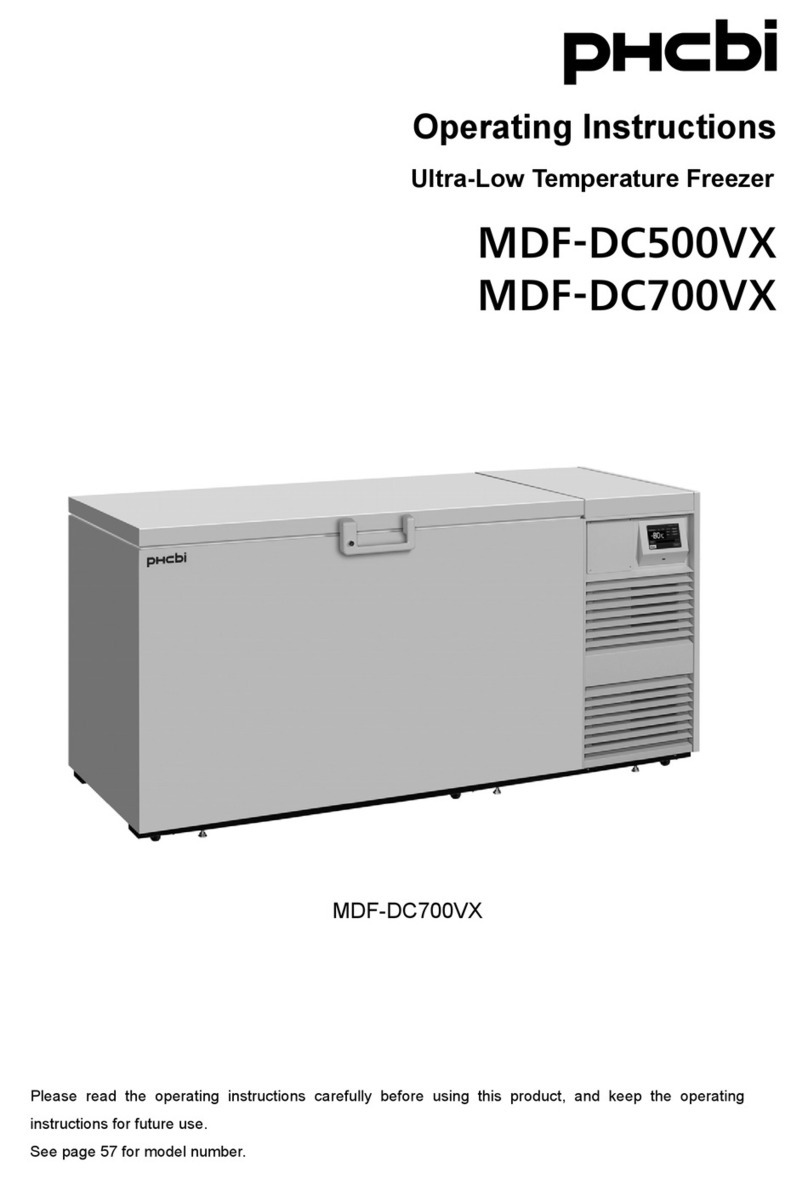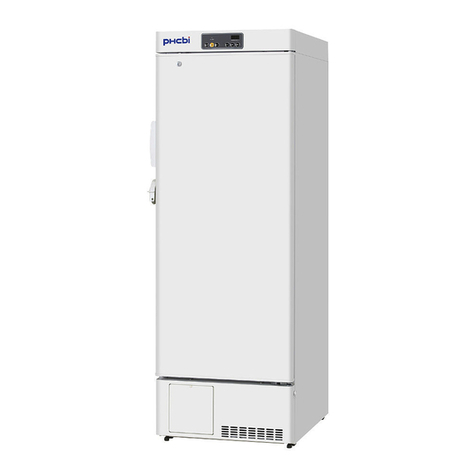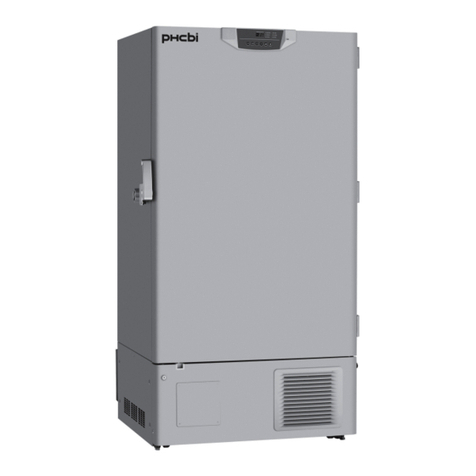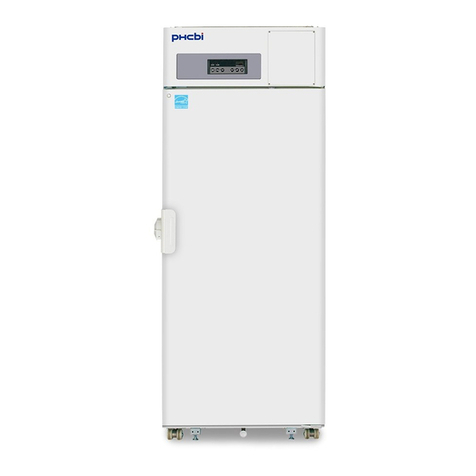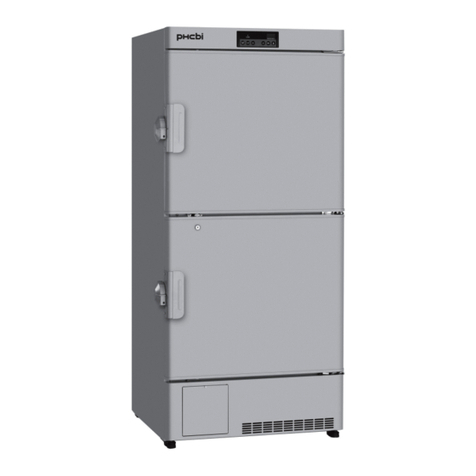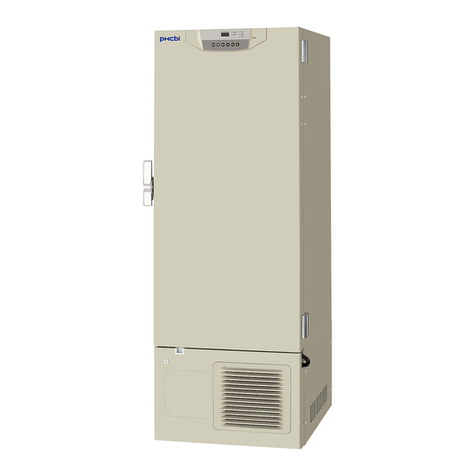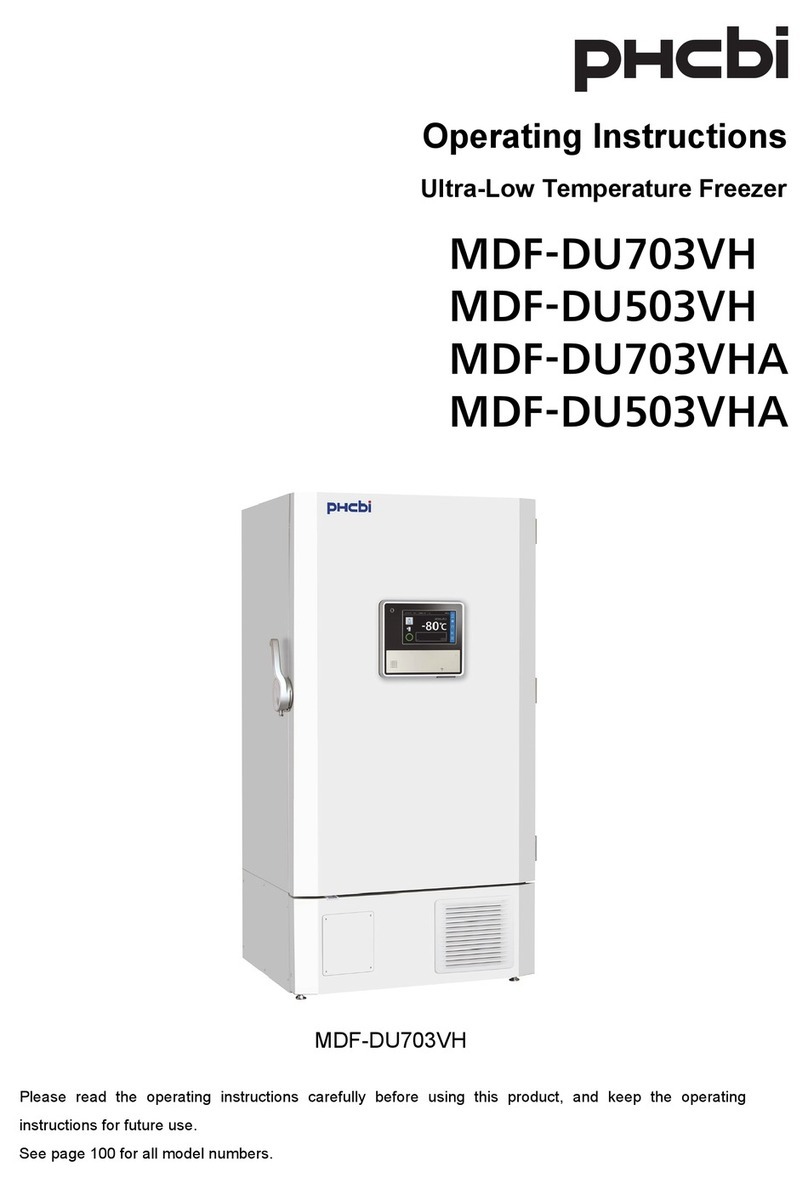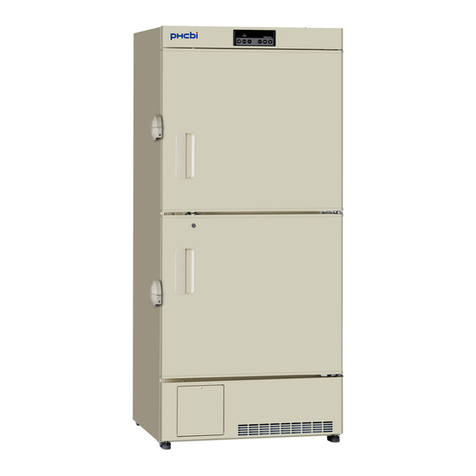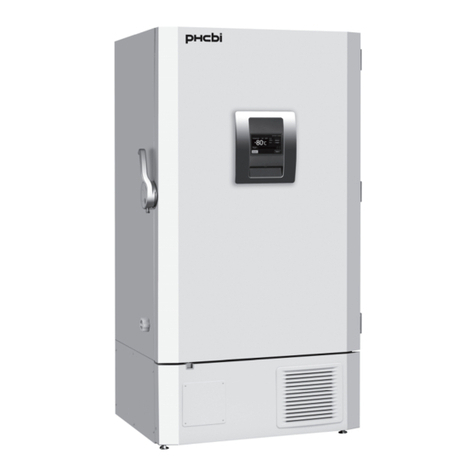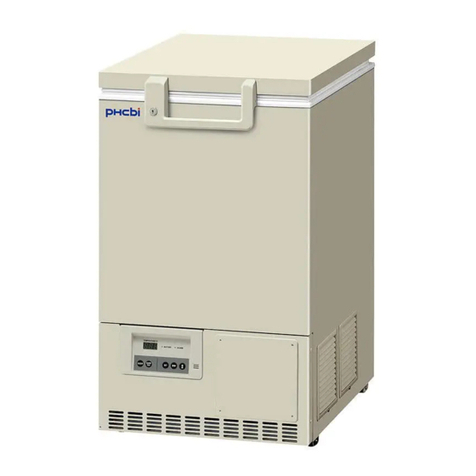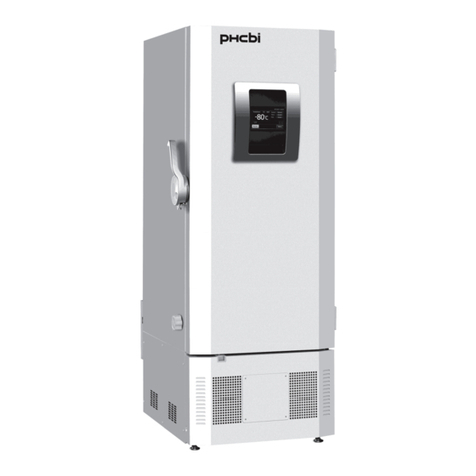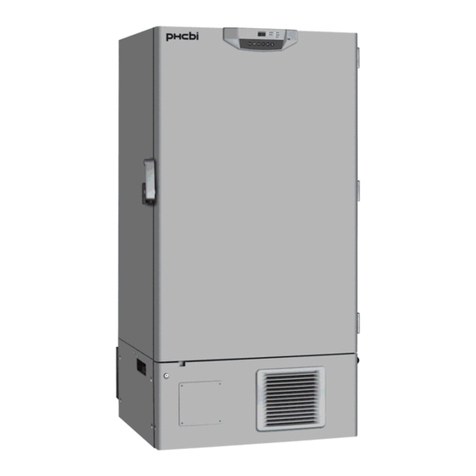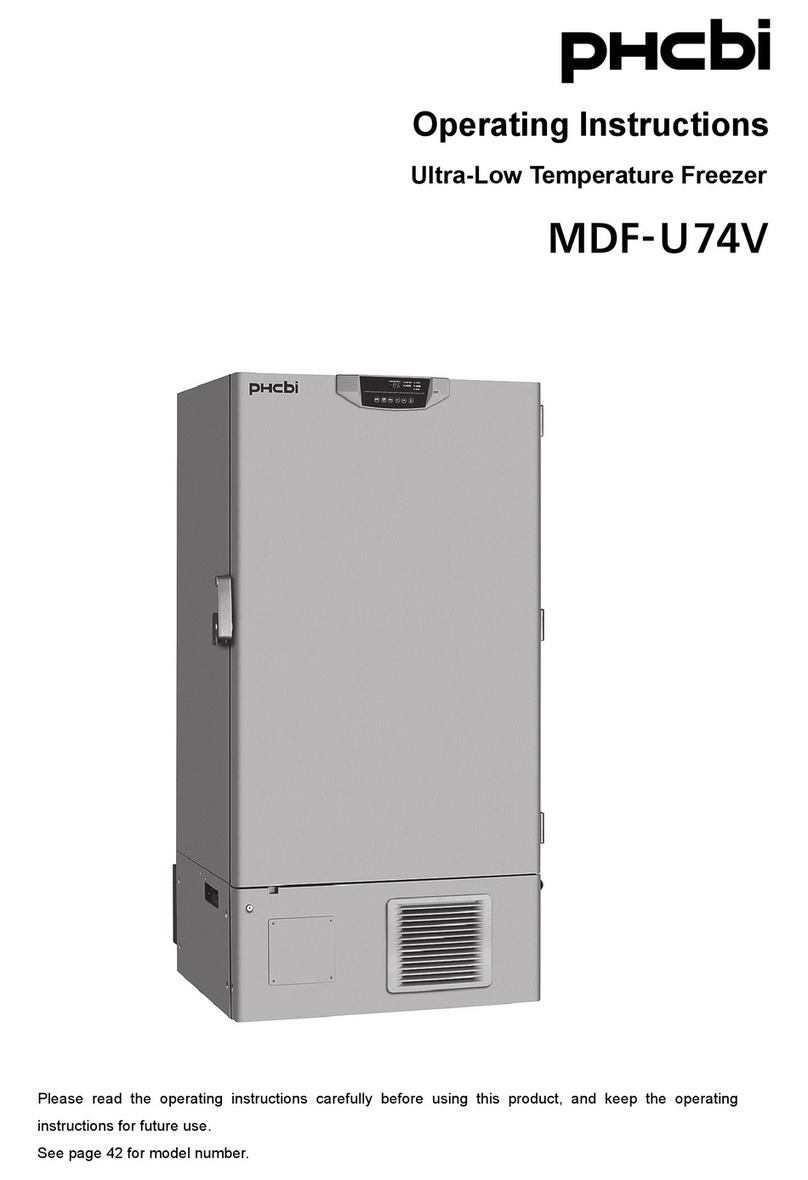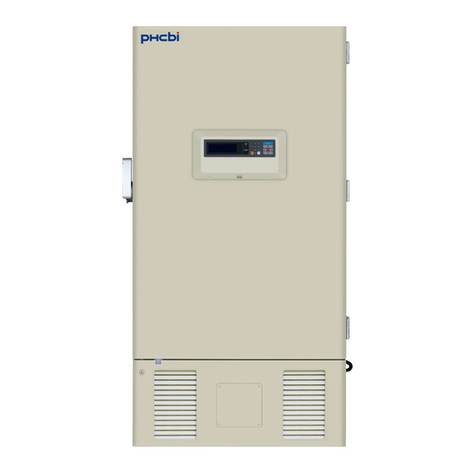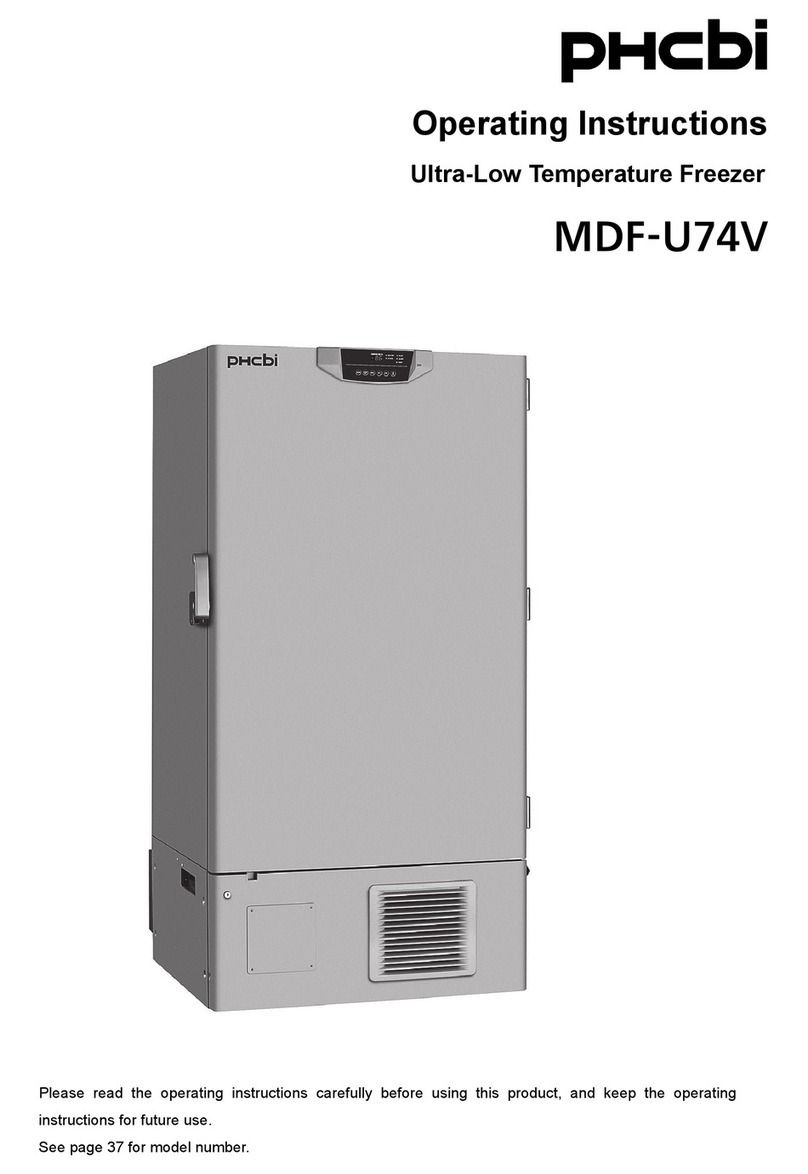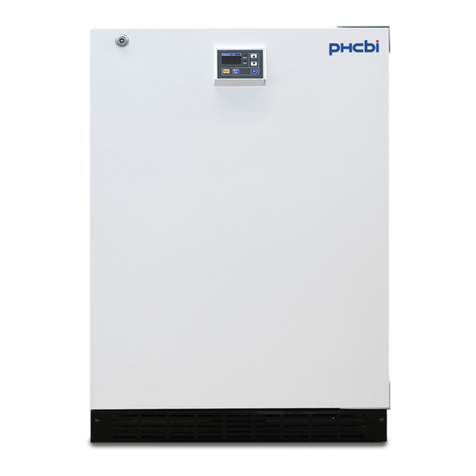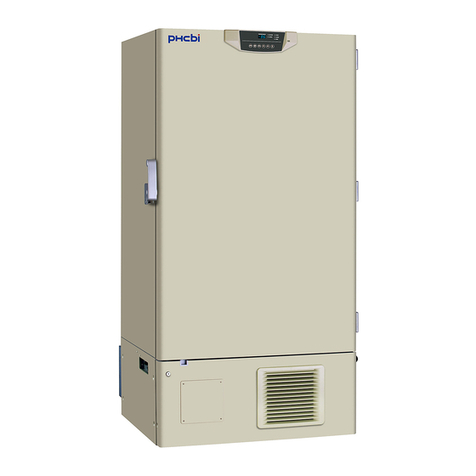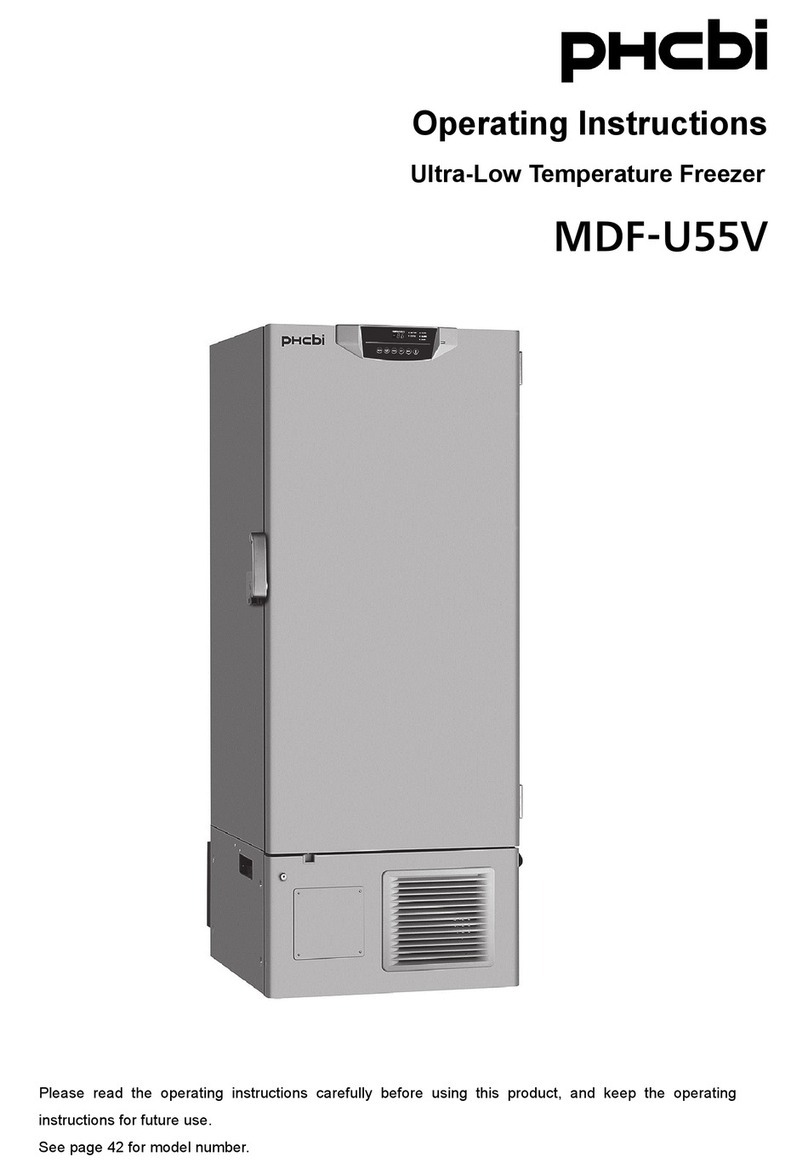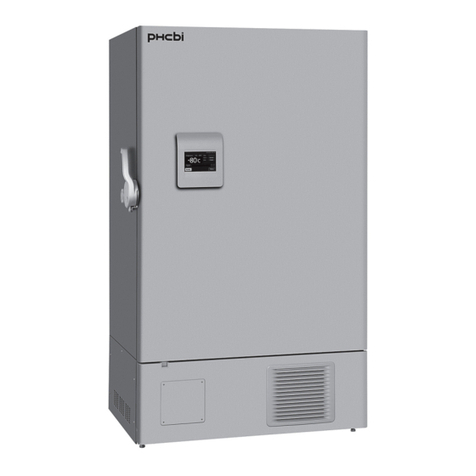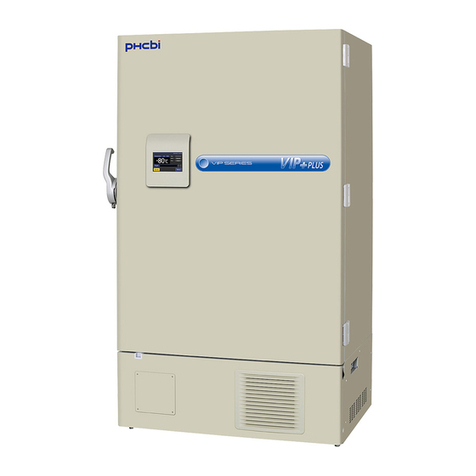
6
PRECAUTIONS FOR SAFE OPERATION
When handling harmful samples (for example, those which consist of toxic, pathogenic or
radioactive substances), install the unit inside a designated isolation facility. If the unit is
installed in a location which is not an isolation facility, there may be detrimental effects on both people
and the natural environment.
Before proceeding with maintenance or checking the unit, and disconnect the power supply
plug. Performing the work while power is still flowing to the product or while the power supply plug is
still connected may give rise to electric shock and/or injury.
Do not touch any electrical parts (such as power supply plug) or operate switches with a wet
hand. This may cause electric shock.
Wear protective gloves and mask during maintenance. Touching or inhaling chemicals or
aerosols from around the unit may be detrimental to health.
Never splash water directly onto the unit as this may cause electric shock or short circuit.
Never put containers with liquid on top of the unit as this may cause electric shock or short circuit if
the liquid is spilled.
Never damage the power supply cord or power supply plug (by breaking, adapting, placing near
a source of heat, bending with force, twisting, pulling, adding weight, or binding). A damaged
power supply cord or power supply plug may cause electric shock, short circuit, or fire.
Never disassemble, repair, or modify the unit yourself. A high-voltage area is located inside the
unit. Any work carried out by unauthorized personnel may result in electric shock. Contact our sales
representative or agent for maintenance or repair.
Make sure the power supply plug is pushed fully in. Faulty insertion of the power supply plug may
cause electric shock or fire due to generation of heat. Never use a damaged power supply plug or
loose power supply outlet.
Disconnect the power supply plug if there is anything wrong with the unit. Continued abnormal
operation may cause electric shock or fire.
Grip the power supply plug when disconnecting the power supply cord from the outlet. Pulling
the power supply cord may cause electric shock or short circuit.
Do not pull the power supply cord, the power supply plug, or the product side plug (inlet part)
hard. If the cord breaks, it may cause electric shock or fire.
WARNING
